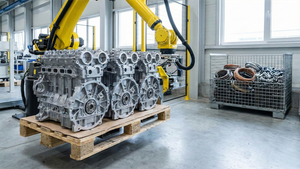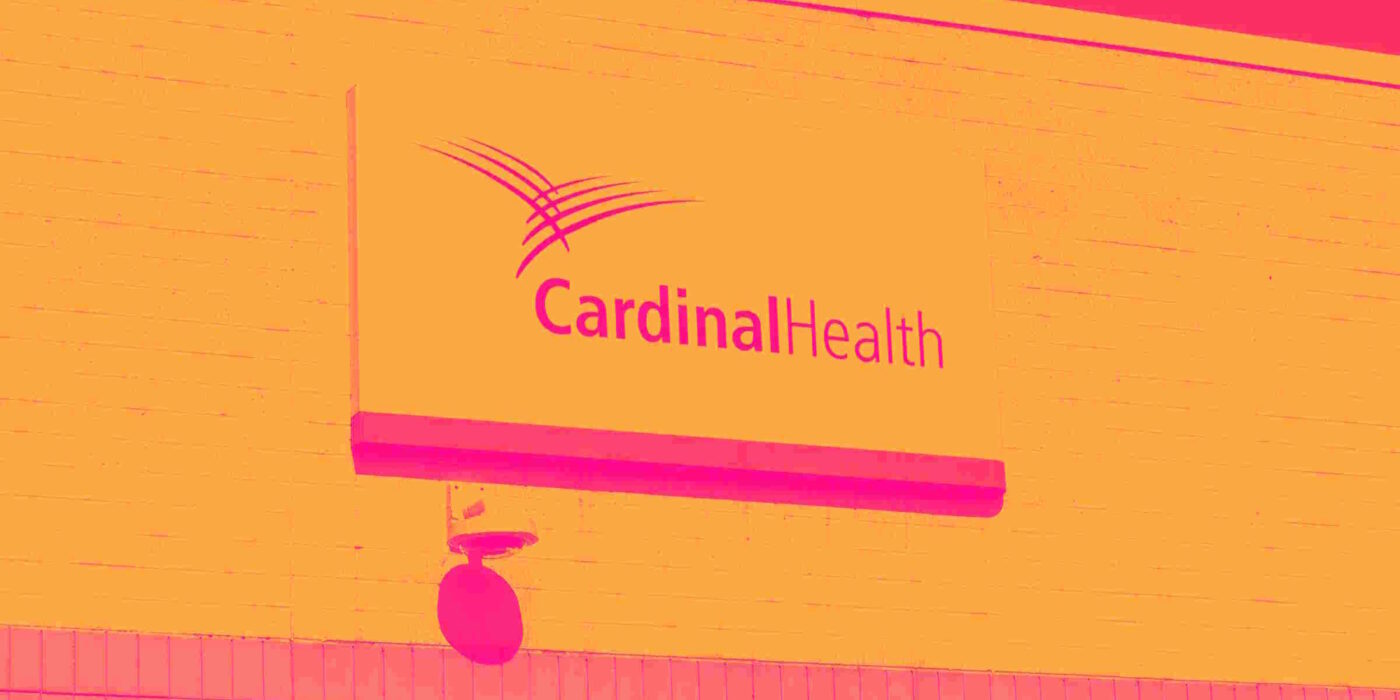
Healthcare distributor and services company Cardinal Health (NYSE: CAH) beat Wall Street’s revenue expectations in Q4 CY2024, but sales fell by 3.8% year on year to $55.26 billion. Its non-GAAP profit of $1.93 per share was 9.4% above analysts’ consensus estimates.
Is now the time to buy Cardinal Health? Find out by accessing our full research report, it’s free.
Cardinal Health (CAH) Q4 CY2024 Highlights:
- Revenue: $55.26 billion vs analyst estimates of $54.75 billion (3.8% year-on-year decline, 0.9% beat)
- Adjusted EPS: $1.93 vs analyst estimates of $1.76 (9.4% beat)
- Adjusted EBITDA: $722 million vs analyst estimates of $721.6 million (1.3% margin, in line)
- Operating Margin: 1%, in line with the same quarter last year
- Free Cash Flow was -$499 million, down from $1.08 billion in the same quarter last year
- Market Capitalization: $31.04 billion
"We delivered strong second quarter financial results while taking significant strategic and operational actions to position us for future growth," said Jason Hollar, CEO of Cardinal Health.
Company Overview
Founded in 1971 as a food wholesaler, Cardinal Health (NYSE: CAH) is a distributor and services company that supplies pharmaceuticals and medical supplies to hospitals, pharmacies, and healthcare facilities.
Healthcare Distribution & Related Services
Healthcare distributors operate scale-driven business models that thrive on high volumes. Their recurring revenue streams from contracts with hospitals, pharmacies, and healthcare providers provide stability, but profitability can be squeezed by powerful stakeholders on both sides (suppliers and customers), pricing pressures, and regulatory changes. Looking ahead, the sector is positioned for growth due to increasing demand for healthcare services driven by an aging population and advancements in medical technology. However, rising operational costs, potential drug pricing reforms, and supply chain vulnerabilities present potential headwinds. Additionally, the push for digitalization and value-based care creates opportunities for innovation but requires significant investment to remain competitive.
Sales Growth
A company’s long-term performance is an indicator of its overall quality. While any business can experience short-term success, top-performing ones enjoy sustained growth for years. Thankfully, Cardinal Health’s 8.2% annualized revenue growth over the last five years was decent. Its growth was slightly above the average healthcare company and shows its offerings resonate with customers.
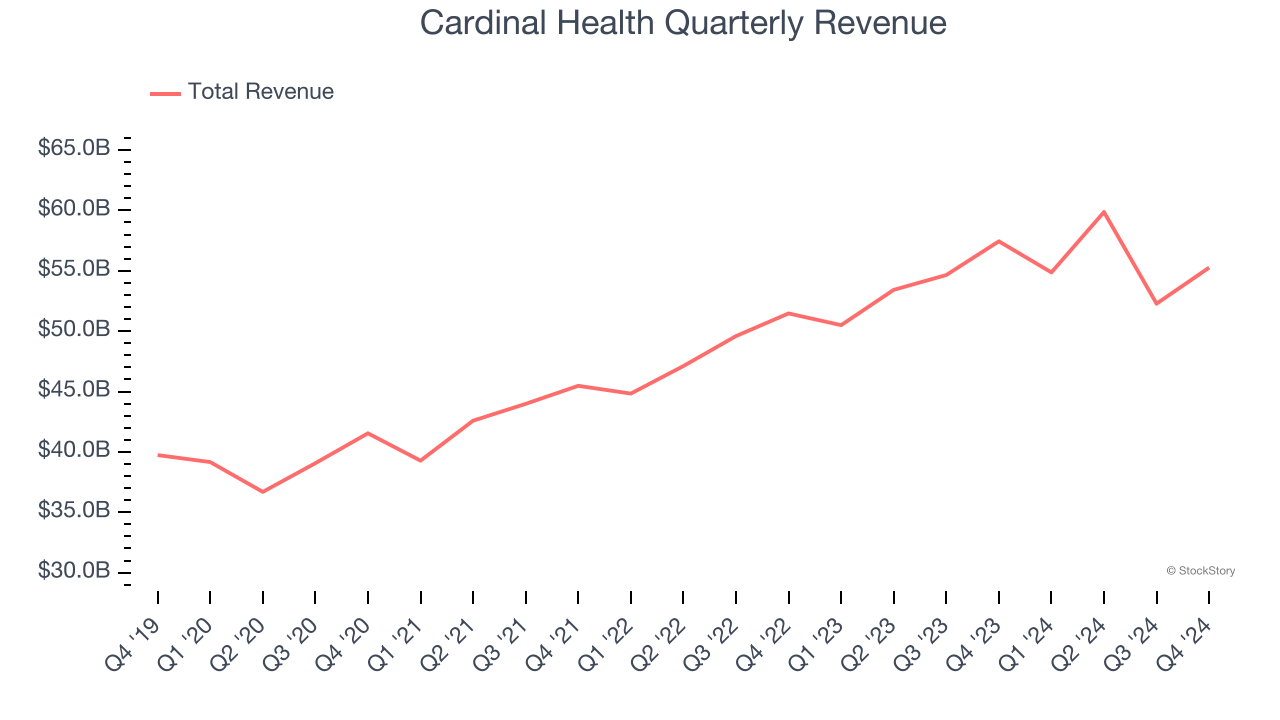
Long-term growth is the most important, but within healthcare, a half-decade historical view may miss new innovations or demand cycles. Cardinal Health’s annualized revenue growth of 7.3% over the last two years aligns with its five-year trend, suggesting its demand was consistently weak. 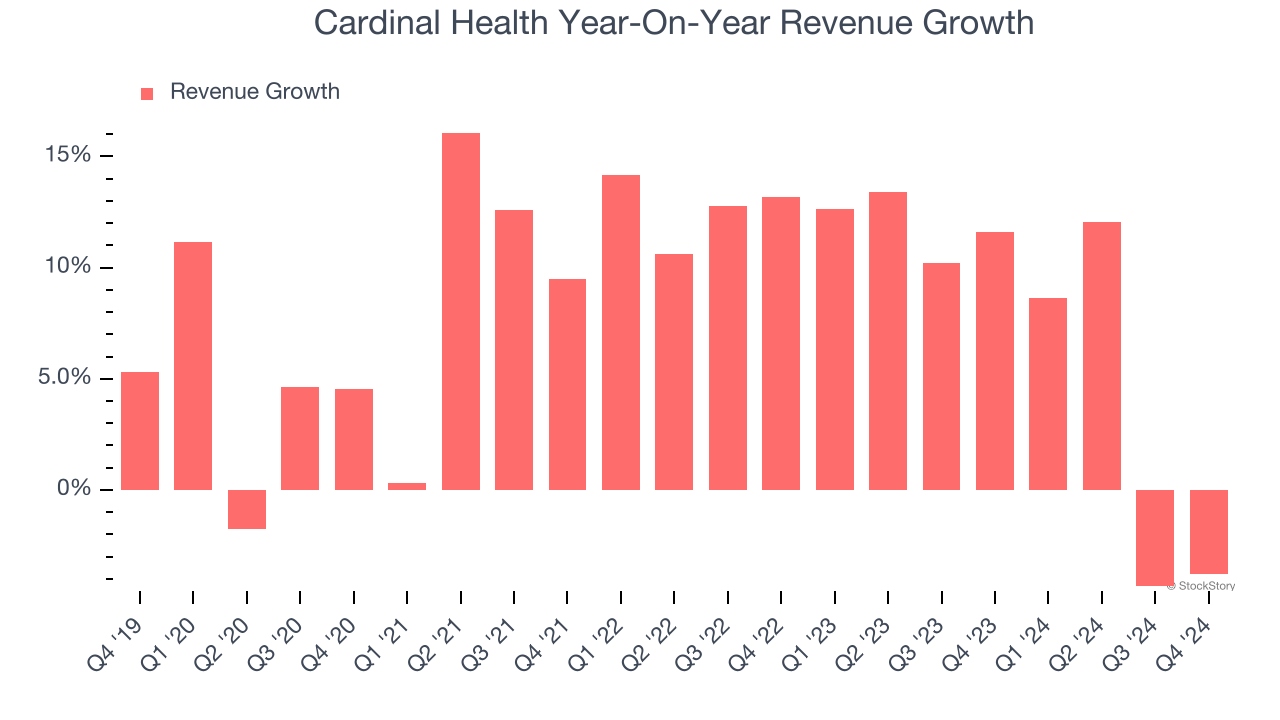
We can dig further into the company’s revenue dynamics by analyzing its most important segments, Pharmaceutical revenue and Medical revenue, which are 91% and 7.4% of revenue. Over the last two years, Cardinal Health’s Pharmaceutical revenue revenue () averaged 8% year-on-year growth while its Medical revenue revenue () averaged 1.7% growth.
This quarter, Cardinal Health’s revenue fell by 3.8% year on year to $55.26 billion but beat Wall Street’s estimates by 0.9%.
Looking ahead, sell-side analysts expect revenue to grow 6.7% over the next 12 months, similar to its two-year rate. This projection is above average for the sector and suggests its newer products and services will help maintain its recent top-line performance.
Today’s young investors won’t have read the timeless lessons in Gorilla Game: Picking Winners In High Technology because it was written more than 20 years ago when Microsoft and Apple were first establishing their supremacy. But if we apply the same principles, then enterprise software stocks leveraging their own generative AI capabilities may well be the Gorillas of the future. So, in that spirit, we are excited to present our Special Free Report on a profitable, fast-growing enterprise software stock that is already riding the automation wave and looking to catch the generative AI next.
Adjusted Operating Margin
Adjusted operating margin is one of the best measures of profitability because it tells us how much money a company takes home after subtracting all core expenses, like marketing and R&D. It also removes various one-time costs to paint a better picture of normalized profits.
Cardinal Health was profitable over the last five years but held back by its large cost base. Its average adjusted operating margin of 1.2% was weak for a healthcare business.
Looking at the trend in its profitability, Cardinal Health’s adjusted operating margin might have seen some fluctuations but has generally stayed the same over the last five years, meaning it will take a fundamental shift in the business to change.
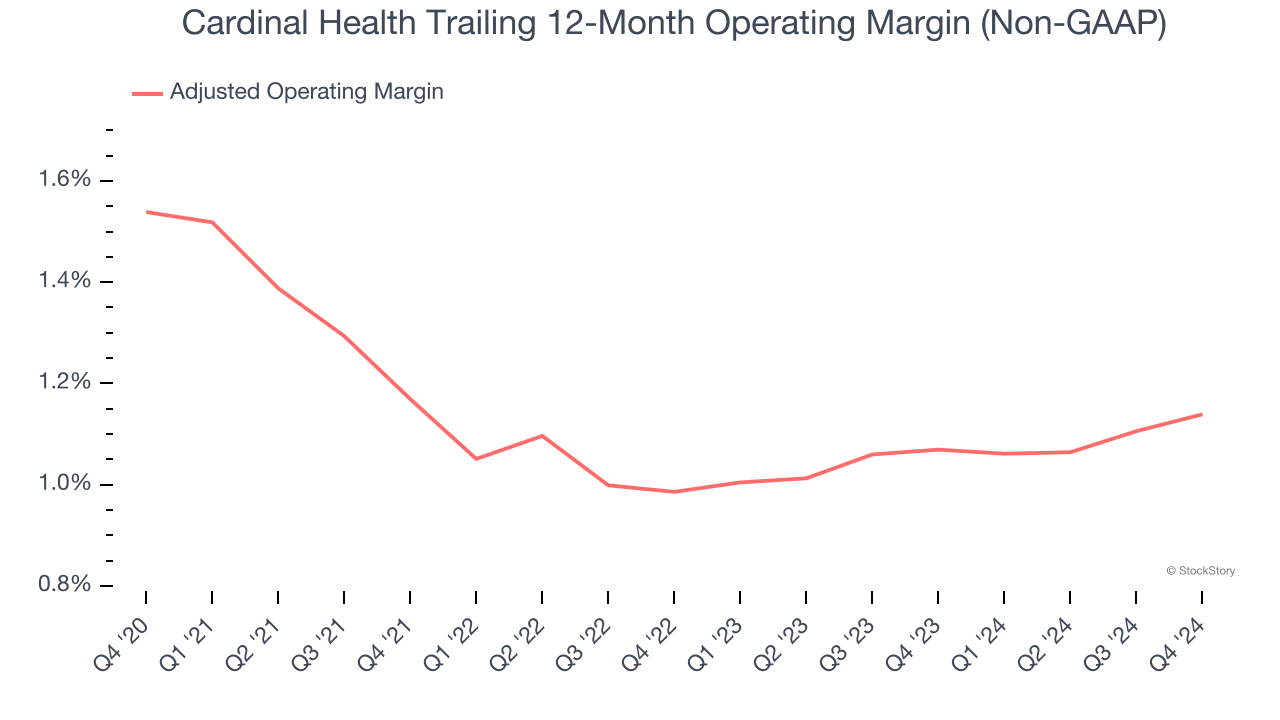
In Q4, Cardinal Health generated an adjusted operating profit margin of 1.1%, in line with the same quarter last year. This indicates the company’s overall cost structure has been relatively stable.
Earnings Per Share
Revenue trends explain a company’s historical growth, but the long-term change in earnings per share (EPS) points to the profitability of that growth – for example, a company could inflate its sales through excessive spending on advertising and promotions.
Cardinal Health’s EPS grew at a solid 7.1% compounded annual growth rate over the last five years. However, this performance was lower than its 8.2% annualized revenue growth, telling us the company became less profitable on a per-share basis as it expanded due to non-fundamental factors such as interest expenses and taxes.
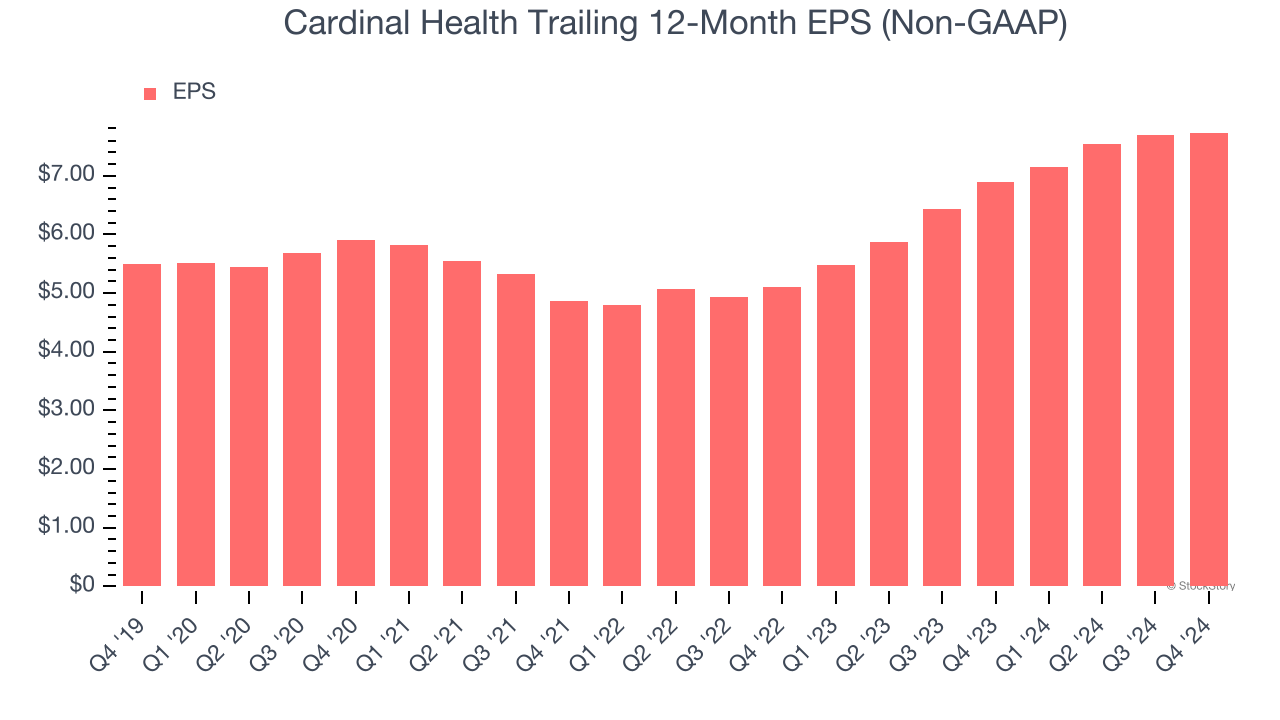
In Q4, Cardinal Health reported EPS at $1.93, up from $1.89 in the same quarter last year. This print beat analysts’ estimates by 9.4%. Over the next 12 months, Wall Street expects Cardinal Health’s full-year EPS of $7.74 to grow 7.1%.
Key Takeaways from Cardinal Health’s Q4 Results
It was good to see Cardinal Health narrowly top analysts’ revenue expectations this quarter. We were also happy its EPS outperformed Wall Street’s estimates. Overall, this quarter had some key positives.
Should you buy the stock or not? What happened in the latest quarter matters, but not as much as longer-term business quality and valuation, when deciding whether to invest in this stock. We cover that in our actionable full research report which you can read here, it’s free.



